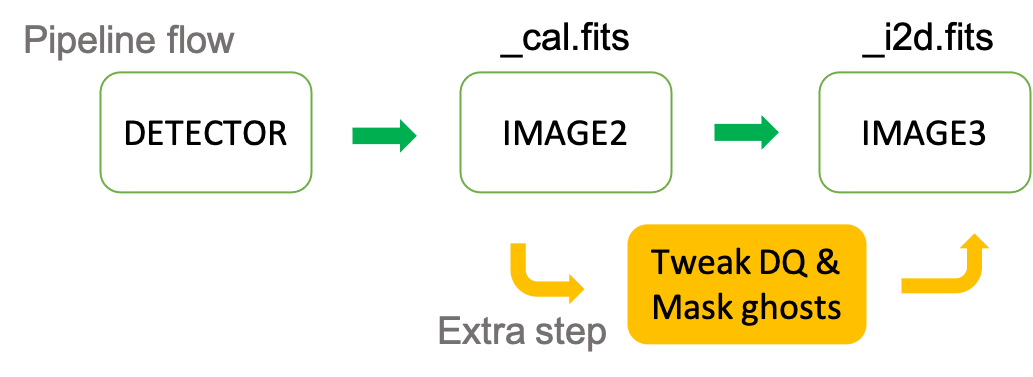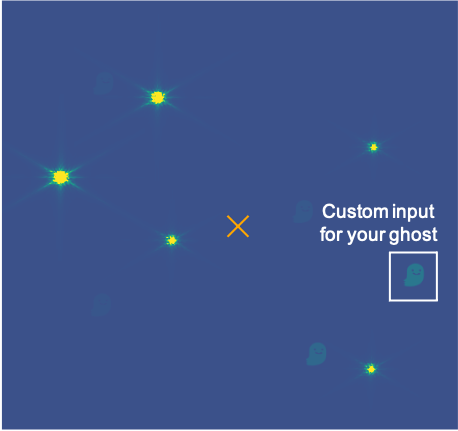Author: Takahiro Morishita
NIRISS WFSS and direct imaging modes are known to produce optical ghosts when there are bright sources in the observed field, as summarized here. Users can identify possible ghosts and mask them out by applying the script provided in this repository.
By providing _cal.fits image (IMAGE2 product) and source catalog to the script, you can:
- identify possible ghosts in the input image
- get a source catalog with a new flag column,
is_this_ghost. - change values of the pixles of the detected ghosts in the DQ array to
DO_NOT_USE, so the pipeline IMAGE3 step will ignore these contaminated pixels.

How this works. Ghost detection, and then DQ tweaking here, can be applied to IMAGE2 products before these go into the IMAGE3 step.
python setup.py installor
pip install niriss_ghostGhost detection in a calibrated image (i.e. _cal.fits from the JWST pipeline). See ./example/Photometry_IMAGE2_product.ipynb for how to get photometry catalog and segmentation map on _cal.fits.
python detect_ghost_image2.py [image] [catalog]Input arguments:
image: Input image(s). If more than one, then comma separated string e.g., image1_cal.fits,image2_cal.fitscatalog: Input catalog(s). If more than one, then comma separated string e.g., image1.cat,image2.cat
Optional arguments:
--rlim: Search radius from the predicted coordinates of a ghost, in pixel.--frac_ghost: Fraction flux of a ghost compared to the source.--o: Output directory. Default is set to the working directory.--f_mirage: Is the input image created by Mirage? If not (i.e. on-sky data), set this False.--keyword_id: Column name for source id incatalog. Default value islabel.--keyword_flux: Column name for flux incatalog. Default is source_sum.--keyword_xcent: Column name for x-pixel-position incatalog. Default is xcentroid.--keyword_ycent: Column name for y-pixel-position incatalog. Default is ycentroid.--f_tweak_dq: Change DQ arrays of the positions of the detected ghosts. You need the segmentation map of the provided catalog (_seg.fits).--segmap: Segmentation map of the provided catalog, if f_tweak_dq==True. (Default: image.replace('.fits', '_seg.fits'))
Alternatively, you can run the script in your python script;
from niriss_ghost import detect_ghost_image2
list_images = ['image1_cal.fits']
list_catalogs = ['image1.cat']
detect_ghost_image2.run(list_images, list_catalogs)- This script currently supports only _cal.fits images.
- Due to recent changes in the photutils package, the column keywords used in this script may not match with those in the input catalog. If this happens, a warning will appear. Users may specify those keywords by using
--keyword_*argumens (see above, Optional arguments).
Ghost simulation module has been implemented in Mirage. Take a look at the documentation here.
An example notebook is also available from this repository, which demonstrates a case with a custom input file for ghosts.

